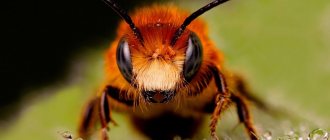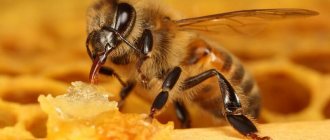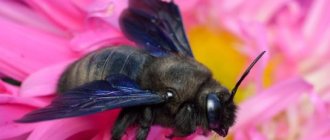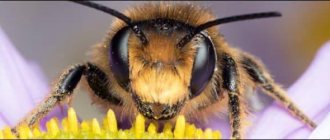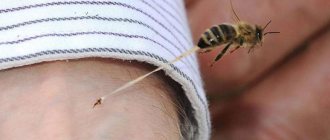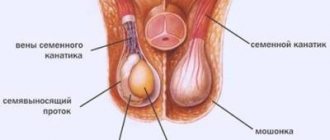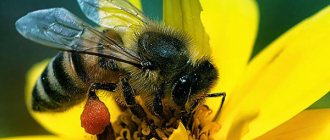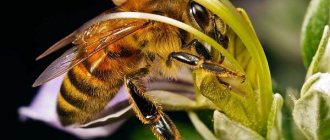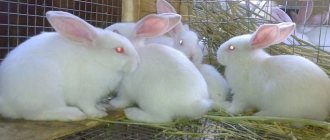Since ancient times, people have bred honey bees to produce healthy and natural products. Somewhat later, people realized that with the help of pollination by bees, plants grow better and faster. In order to feed the whole family, working women work all day, eventually dying on the fly. You can collect a lot of honey from such bees.
Description and structure of honey bees
The body of a honey bee has three parts:
- head;
- breast;
- abdomen.
A bee has 2 compound eyes and 3 simple eyes. The first are located on the sides of the head, and the second on the crown. There is a tentorium (internal skeleton) in the head; muscles responsible for turning the head, proboscis and jaw are attached to it. Each antenna has a segment and one flagellum, consisting of 12 small segments in a drone, and 11 in females. The abdomen of a female bee is divided into 6 segments, and in a male bee it is divided into 7 segments.
The support is considered to be an exoskeleton called the cuticle. On the inside of the insect there are hairs that serve as protection against pollution and also perform tactile functions. All three parts of the body are interconnected by elastic membranes.
Italian
Today it is the most common breed of bees in the world. Their homeland is Italy, from where they were imported in large numbers to Canada, the USA, Australia and other countries. Italian bees are adapted to warm climates and long summer periods. The bees are large, the three front stripes on the abdomen are yellow. They differ noticeably from other breeds by the semirings on the first segments of the abdomen on the dorsal side.
Italian bees easily switch from one honey plant to another; the honey is usually heterogeneous. Peace-loving bees, some beekeepers work with them without a net. In Russian conditions they do not tolerate winter well.
To destroy the eggs of harmful insects, special preparations called ovicides were developed. One of the most beautiful stink bugs is the lined stink bug. Read how this insect harms agriculture here.
Neonicotinoids are a new generation of insecticides that effectively kill insect pests. Read more at https://stopvreditel.ru/rastenij/borba/insekticidy-protiv-vreditelej/nikotinoidy.html link.
The work of the body and individual organs
Bees, like other insects, animals and people, have sense organs and other organs. But in insects they work completely differently.
Digestive system
There are three sections of the bee's digestive system. The first section is called the foregut . It includes the oral organs, pharynx, esophagus, honey crop and gizzard. The digestive tract begins from the mouth of a bee. Next, the mouth opening is connected to the pharynx, which passes into the narrow esophagus. There are special muscles in the pharynx that, by contracting, push food into the esophagus. In turn, the esophagus also has muscles that in the same way push the eaten food further into the honey goiter. The latter has the shape of a pouch and serves as a kind of storage for nectar. The honey craw can stretch as it fills with food.
In the queen and drone, the honey crop is underdeveloped, since they do not need to participate in honey collection and bring nectar to the hive.
Behind the honey goiter there is a muscular stomach (also known as the intermediate intestine). This organ is like a valve of the honey goiter. It has the shape of a funnel, the wide edge of which enters the goiter, and the narrow edge enters the midgut. Thus, food moves further only when the honey crop is full.
The second section of the bee's digestive system is called the midgut . This is the main section of the bee's intestine where food is digested and absorbed. Water, carbon dioxide, uric acid and urates are also formed here. The first two elements are removed from the body through the respiratory system, and the last two enter the hindgut and are excreted.
The third section is called the hindgut . It consists of the small intestine and rectum, which ends in the anus. The small intestine also has muscles that push leftover food into the rectum. In the latter, excrement is finally formed and removed to the outside.
During wintering, excrement accumulates in the rectum, causing the bee's abdomen to enlarge. Bees defecate only during spring honey collection.
Respiratory system
The respiratory system of a bee consists of a large number of tracheas that run along the entire body. The bee has special openings - spiracles, 3 pairs of which are on the chest, and 7 pairs on the abdomen. Initially, air enters through the spiracle into the respiratory chamber, which is covered with hairs to trap small dust particles. Then the air enters the air sacs. After which it passes through small tracheas to various organs of the bee.
Bees can hold their breath for a long time when they are in an environment with poisonous air.
Organs of movement
The organs of movement include legs and wings. The honey bee has three pairs of legs. They are needed not only for movement, but also for maintaining balance when walking, as well as for collecting nectar and cleaning the antennae.
Bees can walk on smooth and rough surfaces due to the structure of their legs. There are claws on the paws that make it possible to cling well to a rough surface, and between the claws there is a pad that serves as a suction cup and thereby helps the bee to cling tenaciously to a slippery smooth surface.
As for the wings, their rudiments are formed in the pupa. The wings are fully developed only in adults. There are veins on the wings, which are a kind of frame for the wing and help in overcoming air resistance during flight. The main role in flight is played by the indirect muscles, which are located in the bee's sternum. They set the wings in motion.
Sense organs
Honeybees have well-developed sense organs. Thanks to them, the insect is able to survive and adapt to the environment.
Vision
Large compound eyes have many small ocelli:
- the uterus has from 3000 to 4000 of them;
- in a worker bee from 4000 to 5000;
- the drone has from 8,000 to 10,000.
With the help of three simple small eyes, insects are able to see the direction of the sun when it is not visible at all. Bees are able to see yellow, blue and ultrasonic rays, but they do not see red color at all.
Smell
The olfactory organs are located on the antennae. The hairs that cover the bee's body play a major role in the sense of touch. This sense allows bees to navigate the nest at night. Drones have 7 times more pores than worker bees.
Taste
Taste qualities lie in the honey proboscis, in the throat, on the antennae and on the paws.
Hearing
The hearing organs are located on organs that are located in some parts of the body, as well as on the legs.
The antennae also have organs that perceive moisture, cold and, conversely, heat. These organs are able to control the climate of their nest and the level of carbon dioxide.
Venom glands
Venom glands are located on the abdomen, consisting of two glands: a reservoir for poison and a 2 mm sting. There are serrations on it, which is why the sting gets stuck in the skin when it “bites”, this is the cause of death of the bee when the stinging apparatus is lost.
The taste of the poison is bitter and sour, there is no color. In the open air it hardens and turns into a piece of crystal. It can easily withstand both freezing and heating up to 115 degrees. When stung, a bee is capable of releasing about 0.5 mg of poison, and the lethal dose for humans is 2 grams, that is, about 700 “bites.”
Pollinators
Bees are flowers' best friends. This may seem strange, since bees drink nectar and carry away most of their pollen. These actions are precisely that part of the joint life of flora and fauna. On which the survival of flowering plants on Earth depends. Like most living things, plants must reproduce. For this to happen, pollen must come into contact with tiny germ cells produced by the flower's pistil. Then and only then can the seeds of the plant ripen. This process is called pollination. The flower itself cannot do this; it is deprived of the ability to move. The best type of transport for carrying pollen is the furry bee, flying in search of nectar. For nectar, the bee climbs into the very cup of the flower, and the shaggy hairs that cover its body collect pollen on itself.
Usually the flower is quite crowded, and when the bee gets out, most of the pollen falls off. But now the pollen reaches those parts of the flower that need to be pollinated in order for the seeds to ripen. The bee provides the same important service to the trees. For example, pollen from male apple flowers must be transferred to female flowers. The flowers bloom in the spring and emit a sweet scent that attracts bees. Which fly from tree to tree to collect as much nectar as possible. Pollen from male trees sticks to the bee's hairy body and partially falls off. When a bee lands on the flowers of another apple tree. So if it weren’t for the bees, there would be no apples or apple trees.
Life cycle of bees
The bee family consists of three names:
- Drones.
- Worker bees.
- Uterus.
Their life cycle is completely different, the life span of a bee depends on the caste, for example, a queen bee can live 7 years, a worker bee can live 8 weeks, and drones die at a maximum of five weeks.
A new family is created by the queen in May-June. First, the males are expelled and cells are laid for the birth of a new queen. As soon as she is born, approximately half of the worker bees fly away from the hive with their queen. First, they wait on the branch until the bee finds a new place to live.
The young queen flies out into the air with the drones, mates with them and returns to her place to lay eggs. Bees in the new nest build honeycombs, where they collect nectar and pollen for storage and for feeding the new generation.
In July, bees store honey for the winter, and with the onset of cold weather they cover up the cracks, and in winter they sit together on the honeycombs and feed on the prepared food.
In the hive, bees communicate with each other using movements, namely, if one bee has found plants that contain a lot of nectar and pollen, it returns to the house, spins around on the honeycomb, wagging its abdomen. Thus, she explains to the others where to fly. She also conveys the aroma of a flower from which she recently collected nectar.
Uterus
When winter ends, the queen lays eggs, and after 3 weeks the larvae hatch. They are fed by worker bees for about a week, then the larva is sealed with wax in a cell, where it turns into a doll, and then into an adult.
After 12 days, the imago appears, this is an insect that differs from an adult bee in the soft coverings of its body. She feeds the brood, cleans the hive and does other household chores.
The role of the queen is to replenish the hives with brood, increasing the colony. She can fly out of the house only during the swarming period.
Worker bees
In an elite colony there are about 70,000 worker bees in the summer and about 20,000 in the winter. They all came from the same womb. Bees clean their home of pollution, feed their offspring and drones.
From the 16th to the 20th day of life, some bees process honey from nectar. 20 days after hatching, the bee flies around, memorizing its hive, and each time it increases the distance.
Drones
Males do not have a sting and are large in size. Their only task is to fertilize the uterus. An interesting fact is that as soon as the male fertilizes the female, he immediately falls and dies. Therefore, their life cycle is different. Many drones hatch from the brood, many more than are necessary, so the bees simply expel the extra and weak individuals. Read more about drones here.
Hive bees
Hive bees are young individuals who work only inside their house, their responsibilities include:
- Feeding the larvae.
- Construction of new cells.
- Maintaining optimal temperature.
- Cleaning and ventilating the nest.
- Taking nectar from summer bees and processing it into honey.
- Insulation of walls with propolis.
They then change from hive bees to summer bees.
Summer bees
Summer bees do not live long, about 8 weeks. For the first 10 days they are not able to feed themselves and eat only pollen, but when they grow up and become feeders, their feeding glands are well developed. Summer bees fly into the field on the 15th day of their life, and some even earlier. In addition to nectar and pollen, they also collect honeydew from plants.
Alfalfa leafcutter bee
Distributed in Europe, Siberia, North Africa and the Far East. These bees were also introduced to South and North America, Australia and New Zealand, as they play an important role as pollinators. Their size is about 1 centimeter. Bees lead a solitary lifestyle. They line their nests with pieces of alfalfa, rosehip, and rose leaves.
They do not cause harm to plants, since they do not damage the vascular system. Although this type of bee does not produce honey, they play an important role in agriculture as they pollinate carrots, alfalfa and other types of crops. The alfalfa leafcutter bee is listed in the Red Book of the Stavropol Territory.
Nest
A colony of honey-bearing bees in a hive consists of 10,000-50,000 individuals, sometimes this figure grows to 100,000 worker bees thanks to the queen. Worker bees build nests in their houses, without which they would not have life. It is in the nests that pollen, nectar, honey are stored, brood grows, etc.
In the center of the nest (occupied by the brood), the optimal temperature is always maintained, which is necessary for the proper development of the eggs. The stronger the bee colony, and the larger the volume of the nest it occupies, the greater the temperature difference between the edges and the center.
Around the nest there are honeycombs built of wax; the wax is secreted from the wax glands of the bee, which over time hardens in the form of plates. Bees spend their entire lives between the plates (combs). A healthy family's nest is clean, dry and smells pleasant.
The honeycomb has 3 compartments in the form of cells for different processes:
- Bees that serve to breed worker bees. Bee bread and honey are also stored there.
- Drone cells, in which drones grow, are where honey is stored.
- Queen cells are temporary cells that worker bees build to hatch a queen. Once the process is completed, the bees gnaw them off.
What affects the quality of honey?
The quality of honey depends on which flowers the nectar is collected from. It may differ in taste, color, smell. The smell is due to the aroma of the plants from which the nectar was taken. Chestnut honey smells like chestnut flowers, for example.
The color depends on the composition of the nectar.
Each flower's nectar has its own impurities. Bees do not particularly separate them - nectar is nectar, but the final honey still turns out to be different colors.
Linden is usually light, buckwheat is dark, and so on. The taste depends on the amount of fructose; the more there is, the sweeter it is. But there are also types that have a bitter taste.
In rare cases, honeydew is mixed with honey. This is a low-quality sweet liquid that is secreted by insects such as aphids and scale insects.
Another similar liquid is honeydew. When these substances get into honey, they reduce its quality. A bee that eats honeydew honey has metabolic processes disrupted, becomes ill and may die.
If bees are left with honeydew honey over the winter instead of high-quality honey, the bee colony may completely die out over the winter.
Swarming
Bee colonies swarm around April or May, when the weather warms up. Thus, they breed in natural conditions. Families in a small room swarm much more often than in large and spacious ones. As long as the brood is growing well and the worker bees are busy feeding the larvae, there will be no swarming. It comes at a time when there are a lot of bees.
If the insects have enough nutrients in their bodies and their physiology does not change, swarming will not occur.
Some methods to prevent swarming:
- moving insects to a cool place where they will expend a lot of energy;
- load the bees with feeding the brood;
- pour a large amount of sugar syrup for processing;
- transfer bees to intensive summer work.
By adopting methods, you can delay swarming “for later” or prevent it altogether. Excess nutrients in the body is also not good; swarming will definitely begin.
As soon as the bees clog the first queen cells, some of the bees fly out of the hive with the old queen. If the weather is bad, the flight may be delayed for several days. Long before departure, worker bees fly out in search of a new place of residence; they look for boxes, lightweight logs that beekeepers specially hang for the departed herd.
After swarming, bees work much better than ordinary colonies. This is due to the fact that the swarm contains mainly young bees, who either did nothing in the old nest or simply helped feed the larvae. The young animals begin to work well in the construction of combs, in collecting honey, in feeding the larvae and preserving honey.
Habitats
Bees live over a very wide geographic range, so it's easier to answer where bees don't live than where they do live. So, there are no bees only in those places where there are no flowering plants: hot sandy deserts and cold arctic tundras. In all other places there are bees.
As for the favorite habitats of these insects, they love to settle in mountain crevices, build their hives in the hollows of old trees and earthen burrows. It is important for bees that their habitat is protected from the winds and that there is a body of water nearby.
Common Breeds
There are a large number of honey bees, they can be distinguished by appearance, color and some other features. A description of the most popular bees can be found in the table:
| Types of honey bees | Description |
| European dark | The most common honey bee. The proboscis of these insects is short, and the body has a dark tint. The bee itself is large. Light honey. The bee is a little aggressive and irritable. Among the advantages are good productivity, resistance to diseases and weather conditions. A family of such bees can bring 30 kg of honey per season. |
| Ukrainian steppe | It is small in size, yellow in color, and does not show aggressiveness. Among the advantages: resistance to diseases and wintering. Such a family is capable of producing 40 kg of honey per season, more than other varieties. |
| Caucasian | It is almost the same in size as the Ukrainian one, but the color is yellow with a gray tint. Since bees have a long proboscis, they can get nectar even from deep flowers. They work in any weather, are not aggressive, and are not prone to disease. During the season, the family brings 40 kg of honey. |
| Italian | Place of birth: Apennines. The proboscis of these bees is long, the abdomen is yellow, and rings are clearly visible around the body. The bee is clean and destroys harmful insects approaching the hive. The hives are cleaned well and often, which has a positive effect on productivity. It is resistant to diseases, but productivity is lower than that of other honey bees. |
| Carpathian | The body is gray in color, there is no aggressiveness. Among the advantages are swarming, resistance to disease and cold, high productivity of 40 kg. |
Types of bees
There are a huge number of bee species known. In total, there are more than two tens of thousands of them all over the world. All bees are divided into two categories: domestic and wild.
It is no secret that people have been breeding these insects to produce honey since time immemorial. But not only it, but also other valuable substances: propolis, wax and medicinal poison. But wild bees .
They are somewhat smaller in size. Their color should be called primitive, its shades are not very bright, rather muted, and the color schemes are mostly monochromatic. The chest of savages is equipped with a protective shell.
The hairs on their body grow much thicker than those of their domesticated counterparts, playing the role of a coat of insects that saves them during periods of bad weather and cold weather.
The size of wild bees is much smaller than that of domestic bees.
Of the vast varieties of the bee kingdom, it is worth highlighting the most interesting. And the first ones that need to be mentioned are real bees. This is the name of a whole family, which includes about five thousand varieties. Among them:
1. Honey bees - most breeds of such bees have been used by people for a long time and are therefore well known to them. At first, our very distant ancestors simply found shelter for such insects in tree hollows and took honey from them. But gradually they began to breed them, keeping them in logs, either built from bark or made from clay.
Much later, houses for these honey-bearing creatures, called beehives, began to be built. And they invented easy-to-use frames. It is very easy to extract honey from such structures along with the honeycombs containing it.
2. Bumblebees are a whole genus of bees similar in many ways to their honey-bearing counterparts. In total, about three hundred species of such insects are known. They live on all continents of the Northern Hemisphere. Among their relatives, they have earned the reputation of being the most cold-resistant. By the way, this greatly increases their chances of survival.
Bumblebees have the opportunity to fly out to collect nectar in the early morning, when the rays of the gentle spring or summer sun have not yet warmed the air. In this way, they are ahead of their competitors and collect all the delicious things from flowers and other plants.
The outfit of each type of bumblebee is different. Some of them have yellow stripes alternating with black, while others have orange or red stripes. There are also completely dark varieties.
Bumblebees also belong to the bee family
Among the representatives of this insect kingdom there are real giants, which are noticeably larger than the bee to which we are all accustomed. A striking example of this are specimens of the genus Megachila. And their size is really impressive, because their wingspan can reach 6 cm. By the way, these bees are not capable of producing honey at all. They live in colonies and are famous for their particular aggressiveness.
In the photo there is a carpenter bee
Maintenance and care
Caring for honey bees is hard and responsible work. We need a wealth of knowledge and its constant expansion in order to properly go out and feed the bees. Keeping bees is a labor-intensive process, as in the spring and summer it will take at least 8 hours a week just to care for the hives. Experienced beekeepers cope much faster.
You don’t need to buy a lot of bees at once, only 6 families are enough, and then you can expand.
Terrain
You need to choose the location for installing the hives wisely; it should be as close as possible to the natural habitat of the bee swarm. It is recommended to place the apiary near high-rise buildings or a spacious beam, but it is necessary to establish the direction of the wind and make sure that the wind does not interfere with the bees and does not blow strongly into their houses. It is also important that within a radius of 2 km from the apiary there are as many honey plants as possible.
The hives should be at an appropriate distance from each other, the distance between houses should be about 4 meters, and there should be a distance of 6 meters between rows. If the space does not allow the hives to be placed in this way, a closer combination is permissible. In a limited area, keeping bees in hives involves 15 families in an area of 3 by 5 meters.
Arrangement of the house
Beekeepers know how important high-quality hives are - they protect bees from bad weather and allow them to properly organize the life of the swarm.
Modern hives can be purchased at a specialty store. They can be narrow-wide or high-narrow, inside of which there are square or rectangular frames. Brood will develop on them and honey will be found. Such colonies can be for one bee colony or for several.
The shape of the structure can be vertical or horizontal. The first is a multi-tiered structure, with 10 to 14 frames on each tier. And the horizontal structure can be expanded to any size by adding housings.
Care in spring
For a beekeeper, spring is the most difficult time, because he needs to create all the conditions for life and development in the spring-summer period after wintering. The first step is to increase the size of the swarm and strengthen it.
Immediately after the end of winter, you should carefully inspect the hive; it should be dry, clean and warm. You also need to pay attention to honey reserves - this is one of the important conditions for the survival of the family. You need 8-10 kg of honey and 2 frames of bee bread per family.
In addition to food, bees must have constant access to water, thanks to which they make larval food. If there is no water, the bees will look for puddles and may die in flight. For good egg laying and long-term survival of the offspring, the queen needs to lay new combs with the onset of spring. After all, bees will be able to make honeycombs on their own only a month after the onset of warm weather.
Basic principles of apiary care in spring:
- reduction of weak bees in early spring;
- insulation of strong individuals remaining in the hive;
- providing insects with food and constantly adding food to feed the brood;
- breeding new queens.
In summer time
When the bees are ready to swarm, the summer care period begins; during this period, the beekeeper needs increased attention. It is important to understand that you cannot remove more than one swarm from one hive. The first swarm flies out of the hive only in good weather conditions. The swarm circles at the location of the swarm, the beekeeper waits for them to land, and then performs a series of manipulations:
- the beekeeper must take a scoop and carefully catch the bees, releasing them to swarm;
- if the bees do not want to fly to the swarm, they are intimidated by smoke;
- the full container is left for an hour in a dark room until they calm down; if this does not happen, then this means that there are two uteruses or there are none.
From June to August the main harvest begins, during which bees collect nectar and pollen within a useful radius. During this period, it is better to limit the bees from building honeycombs, filling the empty spaces with foundation. In this case, the insects will completely focus on collecting supplies.
In August, you should check the readiness of the bees for wintering; special attention should be paid to the central part of the nest. If there is honey there, it is cut off and the hole is filled with spare dried honey. If there are cracks, they must be covered with clay.
In autumn time
In the fall, full preparations are underway for wintering, the reserves of honey in the nests are checked, and the quality of the honey is also checked. To check the quality of honey, a small sample of the mass is taken and mixed 1:1 with water. If after dissolution lumps appear in the form of flakes, then the honey is honeydew. They need to be removed from the hive and high-quality frames installed. In order for the family to survive the winter well, you need to use additional bait in the form of sugar syrup.
In the fall, old queens are replaced by young ones, but it is important to decide whether to keep the offspring or not. In some regions, with sudden temperature changes, weak individuals may not survive. After all the manipulations have been carried out, preparations for wintering begin in three stages:
- From all the frames, only 2 with brood and honey stand out; they move closer to the partition.
- Layings with spare queens move there.
- It is necessary to control the situation until all frames are covered on all sides.
In winter
Bees overwinter in special winter huts, and depending on how they overwinter, their productivity and viability will be the same in the next season. Therefore, it is important to create all conditions for a good winter.
The humidity of the room should be 80%; if these indicators increase, then you need to pay attention to ventilation. It is also impossible for it to drop too much, since the insects will simply die from thirst. You can increase it by hanging wet towels around the winter hut.
The same applies to the room temperature, it should be from 0 to +4 degrees. If the temperature drops, then the room should be insulated, but if, on the contrary, it rises, then ventilation must be installed.
In addition, you should make sure that there is no bright light or loud noise, because the bees may fly out, which is extremely undesirable.
Characteristic
The peculiarity of different populations is that they build their nests on tree branches. The honeycomb contains small cells where honey and pollen are stored to feed future offspring. In warm climates, honey-bearing insects live outdoors and collect nectar throughout the year.
Gradually developing new territories, populations spread further and further, capturing the temperate climate zone. Adapting to the cool temperatures, they began to build nests in trees, which provide protection from the cold temperatures.
When choosing the right breed, the beekeeper needs to know which population is more productive, least susceptible to disease, and study the rules for keeping cultivated species. Caring for honey species requires the beekeeper not only knowledge, but also patience and special skills.
Benefits of Honey Bees
The benefits of bees are very high and varied. Insects provide healthy and nutritious honey, as well as wax, which is used for various purposes. The same applies to bee venom; it is used to treat certain diseases. Insects pollinate many plants, which has a positive effect on them.
Bees are the most beneficial insects for humans living on the planet, because all beekeeping products are natural antibiotics. Unlike medications that kill human microflora, beekeeping products prevent the proliferation of pathogenic microorganisms.
While the bee is alive, it brings the following useful substances:
- I;
- milk;
- honey;
- wax;
- beebread;
- propolis.
Even from the body of a dead bee, healing tinctures are made.
Honey
Honey is used to treat gastrointestinal disorders, infectious diseases and colds. With daily consumption of honey, alcohol dependence disappears, so it is impossible to find beekeepers of alcoholics.
Wax
The product is very valuable, used in industrial sectors. Numerous creams and pharmaceutical preparations are created based on beeswax. To prevent colds, it is recommended to chew wax.
Milk
A unique product that contains many microelements. A worker bee lives up to 30 days, a queen bee can live for 6 years, laying many eggs. She feeds exclusively on royal jelly. It is also used to treat many, even serious diseases. Read about how to get royal jelly here.
Propolis
Tinctures are made from propolis and taken in its pure form. They treat burns, frostbite, tuberculosis, and ulcers. Read more about the medicinal properties of propolis here.
Over the past hundred years, about half of the bee species have become extinct, if this continues and all bees will die out. Because of this, flowers will not be pollinated, and the plant world will slowly begin to die. In the future, people may begin to disappear as a species, since they will not have enough food and oxygen (which plants produce).
Reproduction
Bee larvae
The queen mates with the drone while flying in the air, becoming fertilized, after which the drones are immediately expelled from the hive and they die.
The queen lays about 1,500 eggs every 30 days. There are queens that live up to 6 years, then they can lay 3 million eggs in their entire life.
Diseases and prevention
In bees, a distinction is made between contagious and non-contagious diseases. A bee can get sick from contagious diseases through contact with other sick bees; the most common ones include:
- acarapitosis;
- meleosis;
- nosematosis
There may be parasites on the bee's body that cause other diseases, such as varroa. Some contagious diseases can kill an entire swarm, so the beekeeper must closely monitor their health.
Non-contagious diseases can appear due to improper feeding of bees. Proper nutrition is very important for honey bees, because if a bee receives all the necessary vitamins, microelements and other useful substances, then its productivity is at a high level.
Non-communicable diseases also include those that occur during the development of embryos. The reason for this may be a cold or the presence of parasites; underdeveloped individuals will emerge from such larvae or the eggs will dry out.
In the video, the beekeeper explains what preventive measures can be taken to prevent bees from getting sick; It also talks about diseases that insects can get:
Stages of development
The individual development of an organism consists of two phases, each of which has several stages differing in duration:
- Embryonic. The embryonic stage lasts about 3 days. During this time, all important organs and tissues are formed. As a result, a single-celled egg is transformed into a multicellular organism (larva). Subsequently, it sheds the chorion and embryonic membrane.
- Postembryonic. This phase is characterized by complete transformation into a mature individual. Complete metamorphosis is characterized by an intermediate stage - the pupa. After its completion, the skin is shed and an almost formed bee appears. At this stage, it has a difference in the form of a soft chitinous cover and a large number of hairs.
Difference between honey bees and wild bees
There are both domestic and wild honey bees in nature, differing in characteristics and appearance. Wild bees are more hardworking and more resistant to temperature changes, but they are too aggressive. The quality of the honey produced is also different from homemade honey; it is better and healthier because it has time to fully ripen in the hollow. From year to year, the number of wild bees is falling, as they are influenced by anthropogenic factors, leading to their death.
Domestic bees live in a hive, which is built with the help of a person in the form of a hollow. After the swarm flies to another house, everyone is actively engaged in the construction of wax honeycombs, thus saving wax. Some cells contain honey, while others contain pollen and larvae.
Honey bees independently clean the hive from dust and harmful insects and, with the help of their wings, maintain the required room temperature.
Honey bees are very useful insects that exist on our planet. Without them, humanity simply would not survive. Thanks to bees, flowers grow, people receive healing honey, and many diseases are treated. Before you start breeding honey bees, you should study detailed information about them so that there are no problems when caring for them.
0
0
Copy link
Video
And finally, an interesting documentary about bees – “Tales from the Hive”.
Author: Pavel Chaika, editor-in-chief of Poznavaika magazine
When writing the article, I tried to make it as interesting, useful and high-quality as possible. I would be grateful for any feedback and constructive criticism in the form of comments on the article. You can also write your wish/question/suggestion to my email [email protected] or Facebook, with respect, the author.
Author page
Wintering
In late autumn, at the end of the honey harvest period, all families actively begin to prepare for wintering.
At this time, many plants, herbs and flowers bloom. These are asters, chicory, bittersweet, goldenrod, sunflower. There are enough forbs for worker insects to replenish their winter honey reserves. But if there are few flowering plants, then you need to give your wards sugar feeding. From mid-October, the honey swarm begins to carefully prepare for the cold winter. In winter, the insect population tries to survive the cold with minimal losses. Enough honey reserves have been accumulated to feed the entire family, as well as to build new honeycombs for raising new offspring of insects. In winter there is no flight from the nest; individuals are in a half-asleep state. But inside, the activity of workers continues to breed and feed new brood with honey, which will replenish the ranks of prey-bearing insects in the spring.
With the end of the cold weather and the onset of warm weather, an active increase in the number of individuals begins. From the end of February or the beginning of March, beekeepers are recommended to feed insects in the form of cakes so that the insects begin to eat well and reproduce quickly. The lifespan of an individual individual is up to 6 weeks.
Amazing dance of bees
The dance of bees is an integral part of the entire family of hairy insects. It consists of the following: scout individuals, having discovered lands with a large number of honey plants, fly into the hive and report their discovery with the help of unusual fast movements. Insects, moving around the hive in a special way, convey in this way a message about the location of the source of food, located a few meters from the home. The slower the dance, the further away the food is from the hive. Working insects repeat this dance, thereby accepting the information transmitted to them by the scouts, and fly in the right direction. These extraordinary creatures have such an amazingly developed system for alerting them to the location of their treasured lands.
A perfect creation of nature, the honey bee evokes great respect and indescribable admiration for its entire short and active life, dedication and enormous hard work.
Hymenoptera constitute one of the most numerous (over 100 thousand species) and highly organized orders of insects. These are the best flyers and therefore have the most highly differentiated chest muscles. Representatives of this order are characterized by two pairs of transparent membranous wings. The front wings are always larger than the hind wings.
This order includes bees, wasps, ants, riders, bumblebees, etc. Many species live in large colonies or families (bees, etc.).
What factors influence the honey harvest?
Beekeeping is a difficult craft, and it must rely on several components: the geography of the area, good hives available for use, and the breed of bees.
But the amount of nectar that one bee colony can bring depends on many factors:
- Climate in general: air temperature, early or late spring and autumn, severe or mild winter.
- Weather, which has a direct impact on the volume of the flower base. In the dry month, the harvest is minimal, because... There are not enough honey plants.
- Selected location. The honey supply of one hive can be significantly larger than another. Insect health. Strong and strong bees bring many times more honey than weakened ones. Breeds of bees that are more and less productive.
